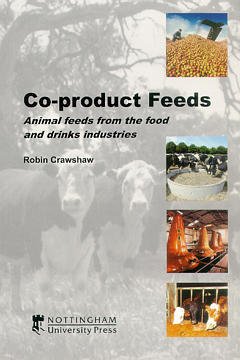Description
Co-product feeds : animal feeds from the food and drinks industries
Author: CRAWSHAW Robin
Language: English
Subjects for Co-product feeds : animal feeds from the food and drinks...:
Approximative price 33.63 €
Subject to availability at the publisher.
Add to cart
Publication date: 11-2001
284 p. · 16x24 cm · Paperback
284 p. · 16x24 cm · Paperback
Description
/li>Contents
/li>
Co-product feeds are produced in British food and drink factories. They have the same provenance as the principal products of these enterprises, being derived from the same carefully selected raw materials and subjected to the same rigorous safety checks. Each co-product feed, often erroneously labelled as processing waste, is described precisely, allowing the reader to distinguish between grains and supergrains, peeled potato and potato peel, steep liquor and spent wash. It describes, for example, how sugar beet fields are audited to ensure good farming practice, how cooking destroys the anti-nutritional factor in raw potatoes, and chopping reduces the risk of choking and how the extraction of sugar and starch leads to higher energy value feeds. Guidance on feeding is provided, with cautionary notes for the farmer and pointers to the factory, where improved practices can enhance feed quality and increase demand. This book will be of value, interest and benefit to farmers, nutritionists, legislators, students and others involved in the feed industry.
Introduction. Definition of feed. Feed materials. Moist feed materials. EU list of feed materials. Quality assurance. Quantitative significance of moist feeds. Industries and their co-products. Bakeries. Brewers and maltsters. Confectioners. Frozen food producers. Fruit processors. Malt and grain distilleries. Milk processors. Pharmaceutical industry. Potato processors. Starch and gluten producers. Sugar extractors. Vegetable packers. Others. Logistics. Geographical distribution of stock and sources. Haulage requirements (tanker / bulker). Storage requirements. Haulage costs (annual growth). Product value. Disposal cost. Environmental objectives.
© 2024 LAVOISIER S.A.S.

